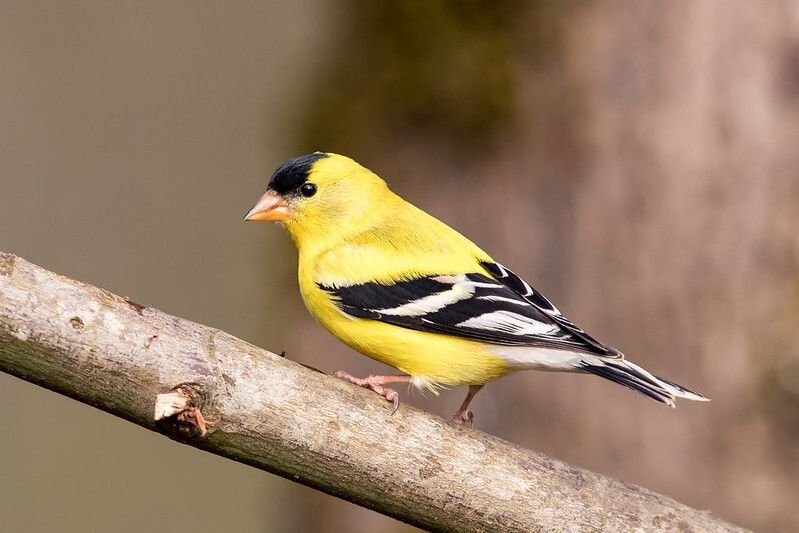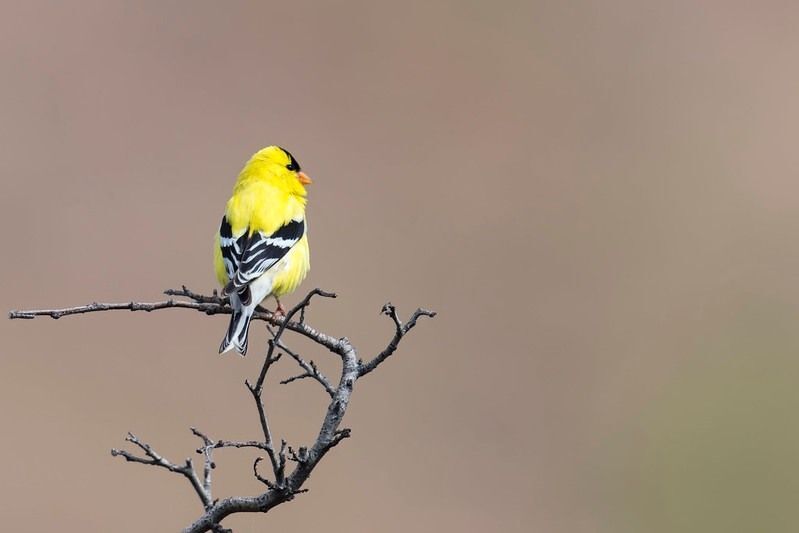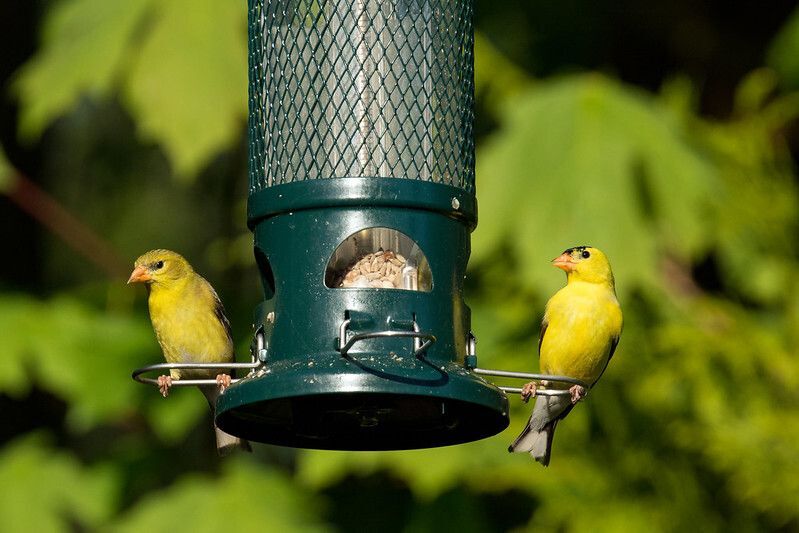American Goldfinch

© Greg Lavaty
Spinus tristis
Family: (Fringillidae) Finches
Profile by Glenn Olsen: Our winter months are a great time for birding on the Upper Texas Coast. One cheerful, attractive winter visitor from the north is the American Goldfinch. While we see few of them in their bright yellow breeding plumage, their winter plumage of olive-yellow is still quite attractive. They normally travel in small flocks and attracting twenty to thirty of these colorful birds to your yard can brighten your day.
The genus name is derived from carduus, the Latin word for thistle, and the American Goldfinch is primarily an eater of seeds, especially during the winter. (The genus name was Carduelis tristis but has been changed to Spinus tristis.) We have native and non-native thistles that the birds feed on. Thistles should not be confused with niger or Nyjer® seeds, which are tiny, black birdseed cultivated in Asia and Africa. However, one way people attract these beautiful birds is by placing niger or Nyjer seeds in bird feeders and the birds love them because they are high in calories and rich in oils.
Another excellent way to attract this species as well as many other birds year-round is to landscape with plants that produce seed attractive to the American Goldfinch. There are a wide variety of plants to choose from, including flowers, shrubs, vines, and trees. Here are a few: thistles, dandelions, sunflowers, goldenrod, evening primrose, native asters, St. Johnswort (Hypericum), trumpet creeper, and certain grasses. Any of these can be planted in existing flower beds to add additional color. The seeds of elm, sweet gum and sycamore trees are also eaten by the American Goldfinch. So, incorporate a few of these plants into your landscaping and begin to provide food and habitat for the American Goldfinch and many other birds too.

© Joanne Kamo
Profile by Carrie Chapin: The American Goldfinch is a relatively common yet cute passerine whose flocks use many habitats, including neighborhoods, feeders, forests, fields, and edge habitats. Their range encompasses all of the contiguous U.S., though they do not breed in the southernmost states. This species eats almost exclusively seeds and often perches on flowerheads to pick seeds straight from the inflorescence. They will also eat seeds from the tops of trees and off the ground in fields. American Goldfinch males are bright yellow in the spring and have black wings with two white wing bars. Females are more olive in color, but all individuals have white under-tail coverts and a notched tail. Unlike Lesser Goldfinch males, who have all black heads and rarely appear in the Houston area, American Goldfinch males have only black foreheads and distinctive white wingbars. Also, unlike the brown and heavily-streaked Pine Siskin, American Goldfinches are entirely unstreaked with a plain side and breast. Like other finches, their stout, conical bills are the easiest way to separate them from warbler species.
American Goldfinches are one of the last birds to nest in the spring and usually begin in late June to early July when the fluffy pappus from milkweed pods is available to line their nests. Females choose a spot high up in a bush or sapling where several branches meet. The cup-shaped nest is woven from roots, spiderwebs, and fibers and takes about six days to make. Two to seven eggs are laid and incubated for two weeks. After hatching, the young are fed a special diet of only seeds. Any parasitic Brown-headed Cowbird young that hatch in the nest quickly starve from malnutrition. After about another two weeks, the surviving finch young leave the nest.
American Goldfinches are attracted to nyjer and sunflower seed feeders and readily use urban areas. Also, their po-ta-to-chip flight calls make them easy to detect! Every year, American Goldfinches announce the coming of spring as little yellow highlighters in the trees. These birds can be seen at most Houston Audubon sanctuaries, including the Edith L. Moore Nature Sanctuary in Houston, the Smith Oaks and Boy Scout Woods Sanctuaries in High Island, and Horseshoe Marsh Sanctuary on the Bolivar Peninsula!
-
Cornell Lab of Ornithology
-
Field Guide
-
Bird Library

© Mick Thompson

© Mick Thompson

© Mick Thompson

© Mick Thompson




















